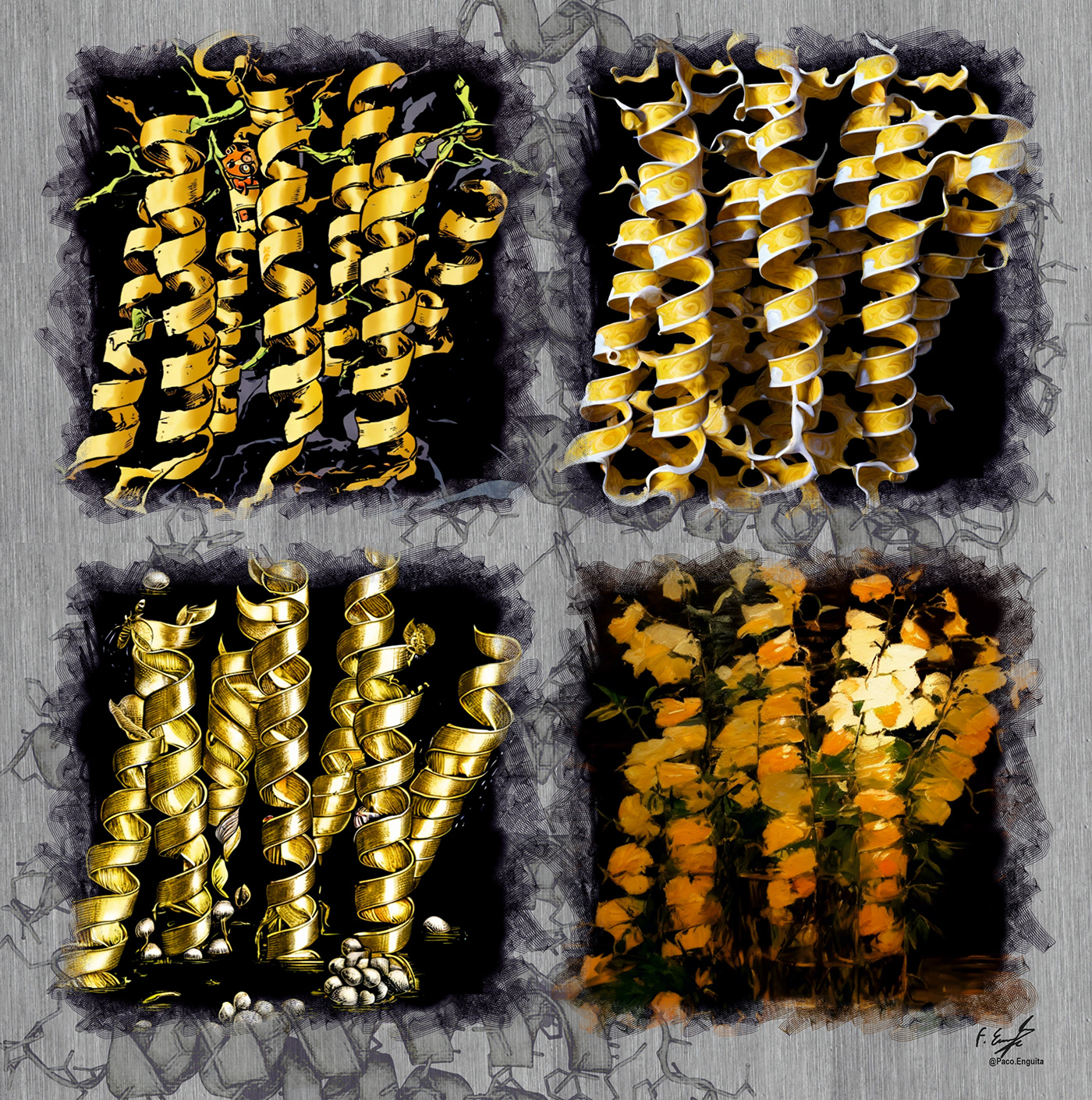




Rhodopsin, a membrane protein with retinal as a chromophore, operates as a photoreceptor in animal retinas. In the early 1970s, a retinal-containing membrane protein (retinal protein) was discovered in a halophilic archaeon, Halobacterium salinarum (formerly halobium). This protein functions as a light-driven proton pump and was named bacteriorhodopsin (BR). The elucidation of the functional mechanism of microbial rhodopsins (ion transporters or receptors) is eagerly anticipated and would also improve biotechnological devices. Toward this end, many biophysical methods have been applied, and one of the most promising methods is X-ray crystallography. Here you have the crystal structure of the eukaryotic light-driven proton-pumping rhodopsin, Acetabularia rhodopsin II, from marine alga (PDB code: 3AM6)
#molecularart ... #rhodopsin ..: #pump ... #algae ... #xray
Structure rendered with @proteinimaging, post-processed with @stylar.ai_official and composed by @corelphotopaint
#molecularart ... #rhodopsin ..: #pump ... #algae ... #xray
Structure rendered with @proteinimaging, post-processed with @stylar.ai_official and composed by @corelphotopaint

